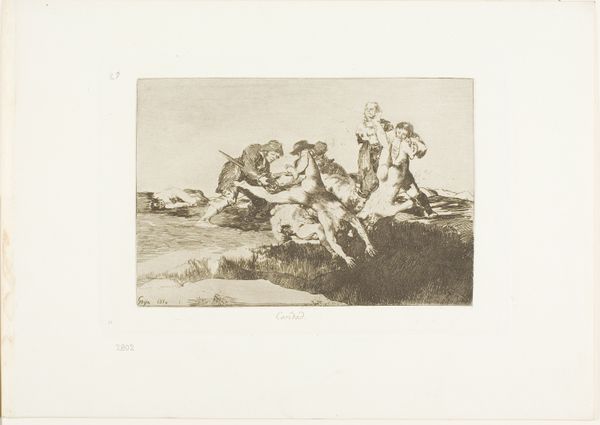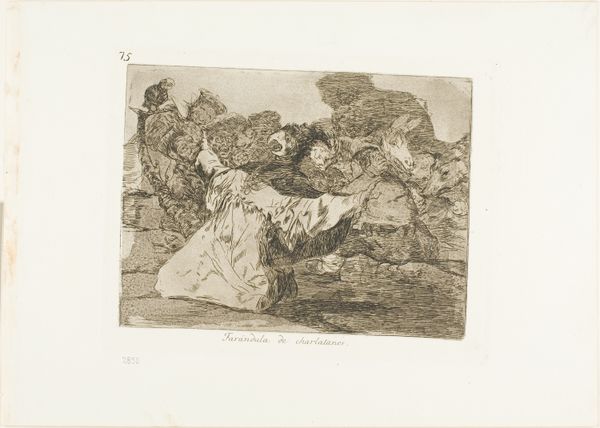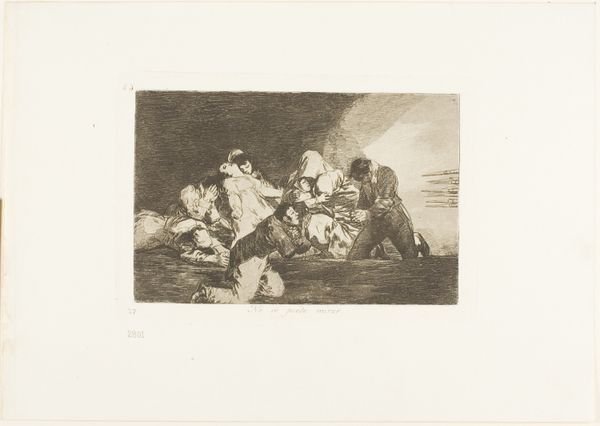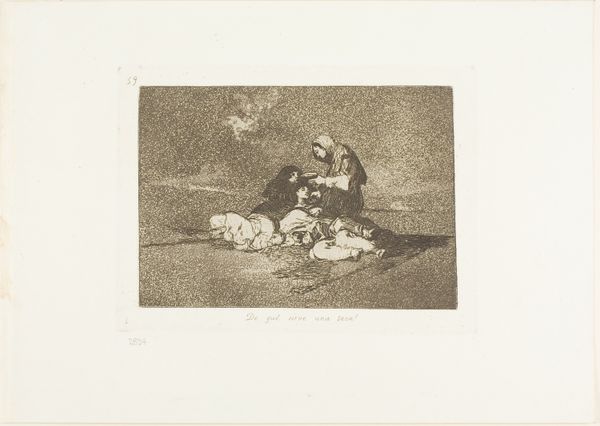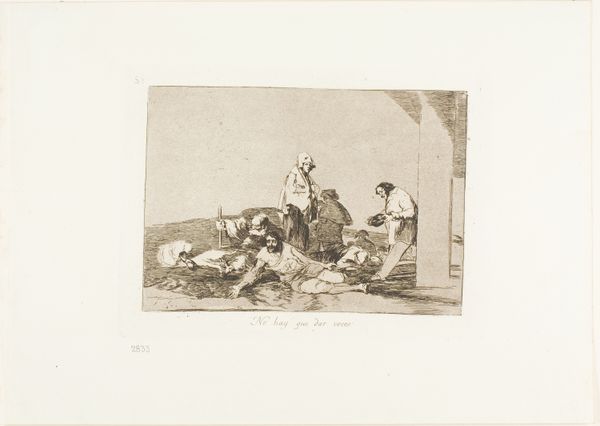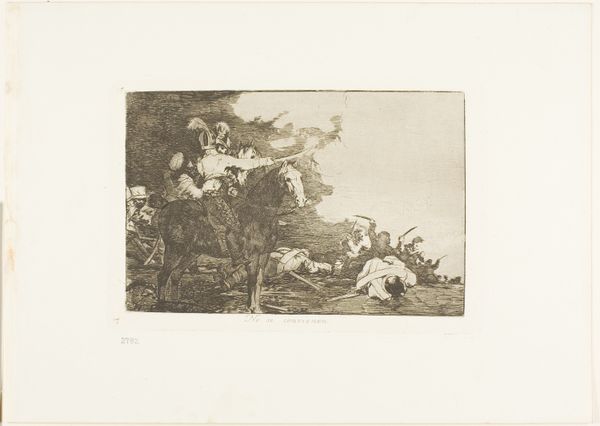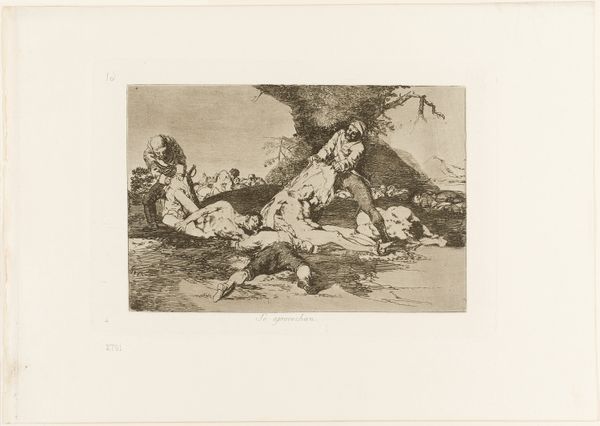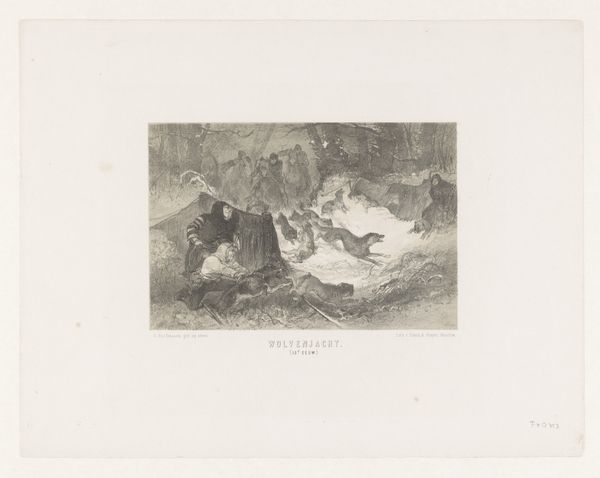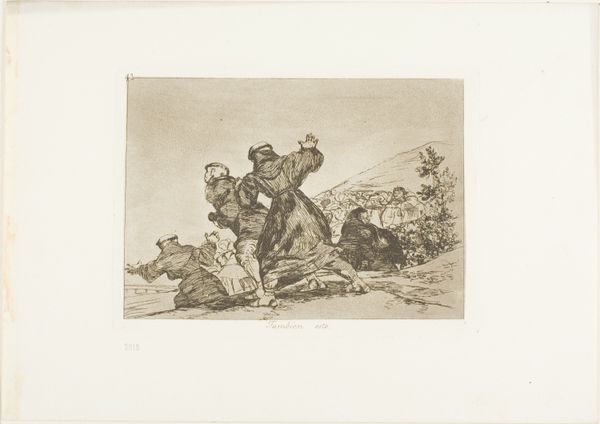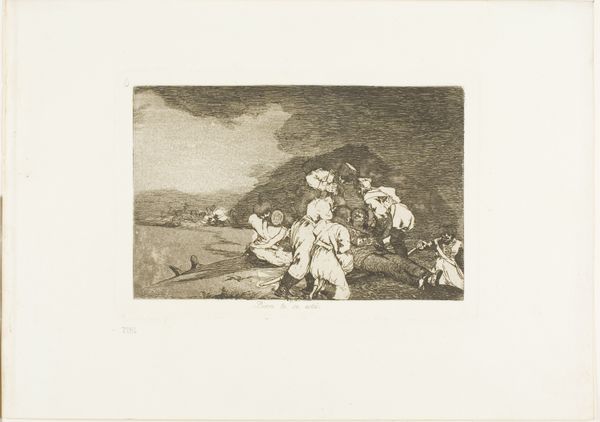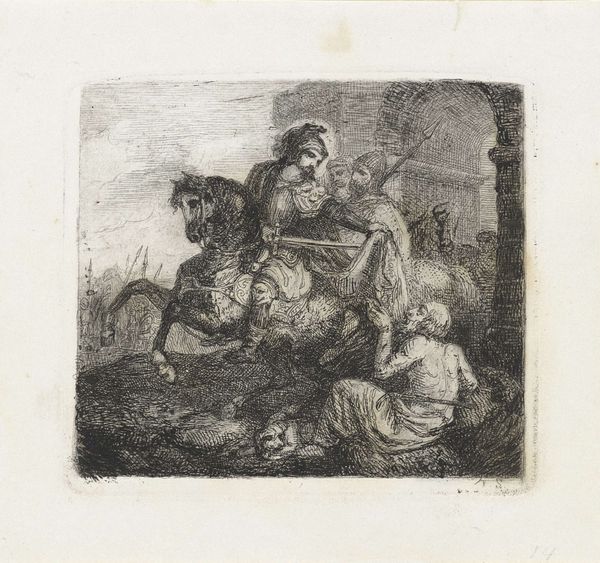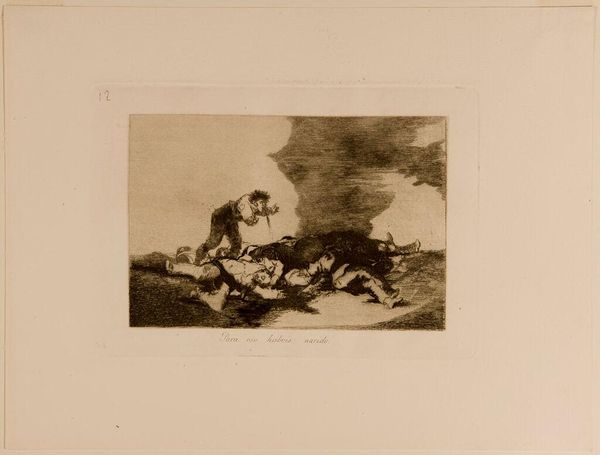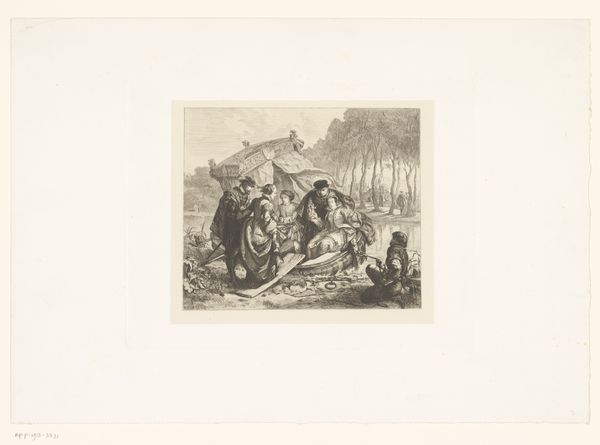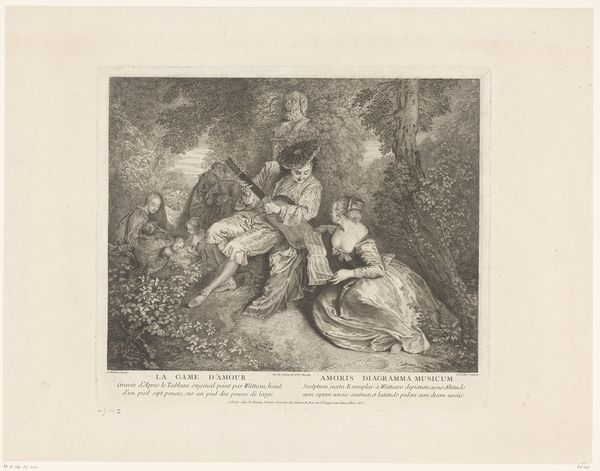
This is What You Were Born For, plate twelve from The Disasters of War Possibly 1810 - 1863
0:00
0:00
drawing, print, etching, paper
#
drawing
#
narrative-art
# print
#
etching
#
paper
#
romanticism
#
history-painting
Dimensions: 126 × 191 mm (image); 159 × 235 mm (plate); 240 × 340 mm (sheet)
Copyright: Public Domain
Editor: This is plate twelve from "The Disasters of War" by Francisco de Goya, potentially created between 1810 and 1863. It's an etching on paper. The image is stark and disturbing, dominated by a pile of bodies. A lone figure is bent over them. What strikes me most is the palpable sense of despair. What do you see in this piece? Curator: The overwhelming imagery of death certainly sets the tone, but look closer. Consider the inscription beneath: "Para eso habeis nacido" – "For this you were born." Goya doesn't merely depict death; he indicts a system that reduces human existence to such a brutal end. The central figure, seemingly desecrating the corpses, becomes a potent symbol. Editor: A symbol of what, exactly? Desperation? The dehumanizing effects of war? Curator: Both, perhaps. But also consider the echoes of sacrifice. The pile of bodies—almost an altar—and the figure performing what seems like a horrific ritual... What cultural memories do such compositions stir within you? Think about the visual language of martyrdom, of offerings... even inverted and twisted by the machinery of war. Goya presents us with a horrifying echo of sacred imagery. Editor: That’s… chilling. So the act is both a desecration and a twisted, ironic sacrifice? The suggestion that violence is some kind of warped ritual? Curator: Precisely. And that's where Goya's genius lies – in layering these complex, contradictory symbols to create a truly unsettling image. Editor: I never would have thought of those connections. It really shifts how I understand the piece, moving it beyond just a depiction of war's horrors to something far more disturbing about human nature and memory. Curator: Indeed. By tapping into these deep-seated visual codes, Goya makes the horrors of war resonate far beyond the immediate scene. A disturbing, yet incredibly powerful work of art.
Comments
No comments
Be the first to comment and join the conversation on the ultimate creative platform.
